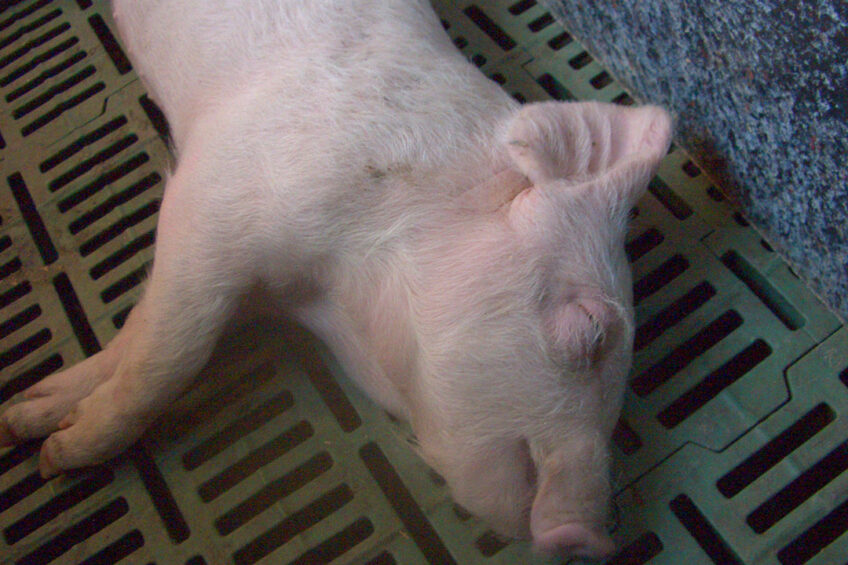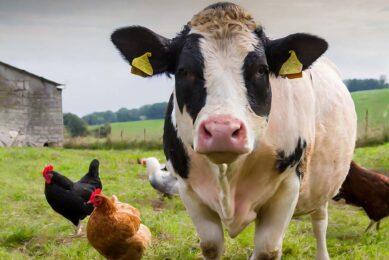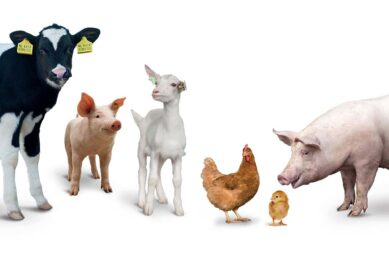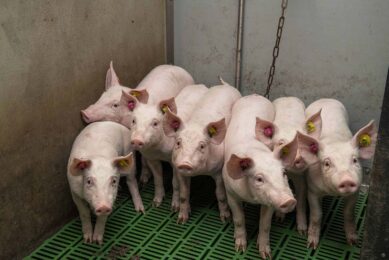Reducing antimicrobial use and ZnO consumption on farms

Replacing antibiotics and ZnO requires a comprehensive approach. Studies show that early vaccination against Oedema disease is a successful tool for reducing mass medication with colistin and ZnO on farms.
Oedema disease (OD) is one of the major diseases in pigs during nursery causing significant losses on affected farms. It is caused by strains of E. coli producing Shiga toxin (STEC), specifically Shiga toxin 2 subtype e (Stx2e). These strains are mostly equipped with fimbrial adhesins F18ab. The susceptibility of pigs to OD often increased shortly after weaning, when specific receptors (sensitive to attachment by F18 adhesin) are developed and present on the surface of enterocytes. Clinical OD develops as a characteristic toxaemia with typical manifestation including swelling of the eyelids and the ridge of the nose. Several inner organs can show edema like the colon or the brain. Staggering gait followed by paralysis, lying on the side with paddling limbs, together with other symptoms of neural affection, result into the death of affected animals. The correct OD diagnosis needs to consider differential diagnosis (S. suis and G. parasuis infections mainly). Vaccination with products based on specific toxoid Shiga toxin has been shown to be the most successful method preventing clinical OD and significant mortality reduction. Vaccination can be a very effective tool for reducing the need for antibiotic and ZnO medication as well.
Effect of vaccination on antibiotics consumption
Targeted vaccination can decrease the use of antibiotics (ATB) and zinc oxide (ZnO) on farms with enzootic OD. Usually, OD-affected farms are implementing mass ATB medication via medicated feed or drinking water and long-term use of pharmaceutical levels of ZnO, immediately post weaning, due to the intermittent outbreaks of clinical disease and high mortality. On the other side, the effectiveness of individual, parenteral ATB treatment is rather low, once the clinical symptoms of OD have developed. Such an approach (frequent use of ATB and ZnO) can lead to antibiotic resistance in bacteria on affected farms.
There are several studies showing the effect of vaccination against OD in early age of the animals (4 days of age) on reducing ATB treatment. The characteristic and frequent use of zinc oxide and colistin sulphate, which is now considered as an ATB with restricted use, was significantly reduced in pigs by vaccination against OD, when compared to a former period without vaccination (Figure 1). A significant reduction of colistin consumption, measured as mean defined daily dose animal/month, was described after implementation of vaccination in a study carried out on a Dutch farm, monitoring consumption for the period of one year (Table 1).
Vaccination is also particularly timely, given current/impending restrictions on the prophylactic use of antibiotics in feed and therapeutic levels of ZnO, in order to control infections during the post weaning period, especially in the EU. There is a big pressure to decrease usage of both fluoroquinolones (enrofloxacin) and colistin for the mass medication post weaning. They are included in category B = “Restrict” in a new, 4-group categorisation, which corresponds to Category 2 in the first Antimicrobial Advice Ad Hoc Expert Group (AMEG) report. Much attention has been paid recently mainly to colistin, due to studies performed in China and subsequently as well in EU countries, describing a transmissible, plasmid-mediated resistance gene in commensal E. coli, (mostly mcr-1, mcr-4 and mcr-5). This fact led, like it was mentioned, to the re-assessment of the low-risk use of colistin in animals to the reclassification of colistin to Category B of the proposed European classification system, which includes medicines reserved for treatment of infections in humans, for which no effective alternative treatments exist.
Another fact, which is necessary to consider, is that STEC strains are frequently multi-resistant to antibiotics commonly used during the nursery period, including the ones which are used for treatment of post weaning diarrhoea and OD.
A recently published study evaluating sensitivity profile of STEC strains detected frequent resistance to the aminoglycoside group (Gentamicin, Neomycin,Clindamycin) among others, which is considered as possible alternative for colistin (Table 2).
Effect of vaccination on ZnO consumption
Currently, ZnO together with colistin are probably the most frequently used compounds during the post weaning period to control E. coli diarrhoea and losses caused by OD. Several studies and reports showing that zinc oxide does contribute to antimicrobial resistance, as the high levels of zinc oxide can increase the proportion of multi-resistant E. coli as well, increase the persistence and prevalence of methicillin-resistant Staphylococcus. Therapeutic usage of ZnO (high levels of zinc oxide, about 2,000, 2,500, 3,000 ppm, whereas the requirement for zinc to the pig is 150 ppm) will be banned based on the negative benefit-risk balance from July 2022 onwards. Therefore, other effective tools are needed.
A recently published study from Spain proved significant positive effect of vaccination on zootechnical parameters (ADG- Average Daily Gain and ADFI- Average Daily Feed Intake) in the group of piglets vaccinated against OD. Vaccination significantly reduced pig losses and improved ADG and ADFI, particularly when ZnO was removed from the feed.
Other possibilities for control of OD
Besides vaccination, other possible management strategies, such us restriction of feed intake, reduction of crude protein content, digestible energy and high fibre diets have been also reported as effective in the control of E. coli infection outbreaks in the field and can be used for OD control with variable effects. However, these measures have obvious negative effects on the performance of the animals, limiting growth potential of the current fast-growing genetics and compromising the economy of production.
Reducing mass medication on farms
Early vaccination against OD on 4th day of life of piglets was proven to be a successful tool to reduce the mass medication with colistin and ZnO on farms. It can be concluded that replacing antimicrobials and ZnO demands is a multifactorial approach and vaccination against infections caused by frequent post weaning pathogens, like Shiga toxin producing E.coli strains is one of the most promising and effective tool.
Contact the author daniel.sperling@ceva.com for references.






